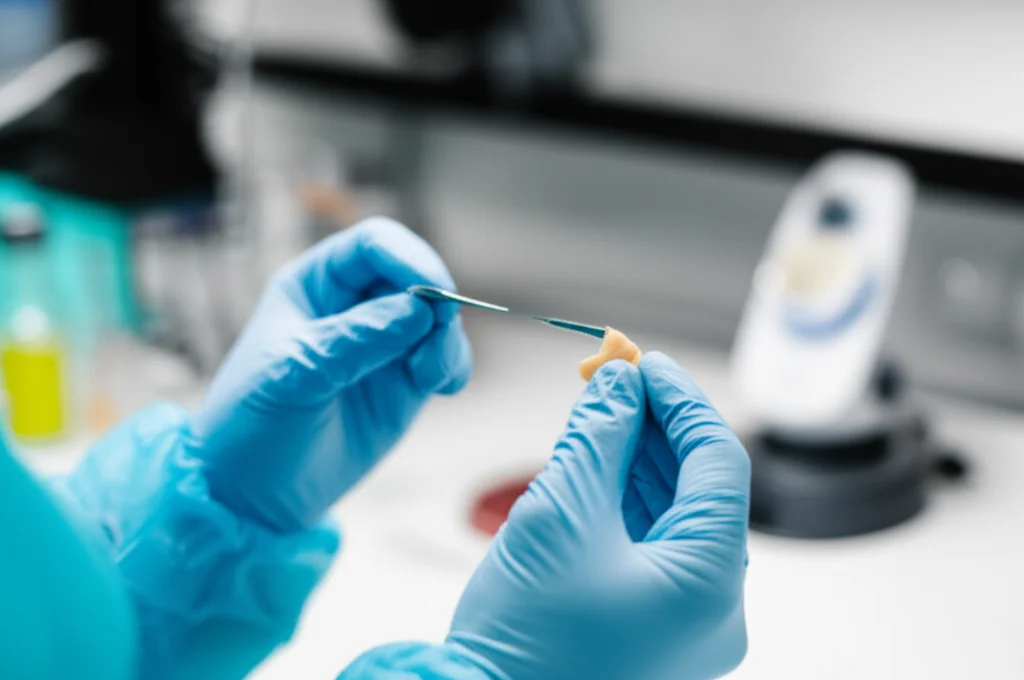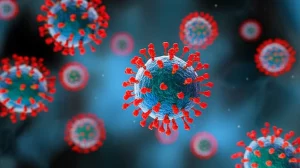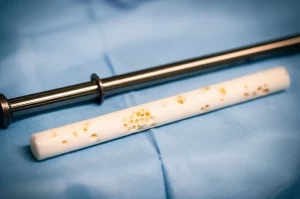Catching the Culprits: Why Testing Nose Implants Matters After Rhinoplasty
Alright, let’s talk about something that’s become pretty popular: getting a little help with your nose shape. Rhinoplasty, or a “nose job” as folks often call it, is a huge part of the plastic surgery world these days. And you know what? Using prosthetic implants is a common way to get that desired look, helping sculpt and enhance facial features. It’s effective, and frankly, it saves you from taking tissue from somewhere else on your body, which has its own set of hassles.
But here’s the rub. As great as these procedures are, they’re not without their potential downsides. One of the biggest headaches? Infections after the surgery. It’s a real bummer, and it can lead to all sorts of problems, including the body rejecting the implant itself. We’re talking about a complication rate that’s been reported around 3.7% – not super high, but significant enough to cause major stress and cost for the patient.
So, why do we still use prosthetics? Well, taking cartilage from your ear might not give you enough material, and it changes your ear shape a bit. Rib cartilage is tough and can warp over time, which is definitely not what you want for a straight nasal bridge. And fascia grafts, while good for adding volume, can shrink a lot and don’t offer much structural support for lifting the tip. Given these limitations with using your own tissue, artificial materials really are a vital option.
Now, figuring out *why* an infection happens after a nose implant surgery is complex. It could be the surgical technique, how you take care of it afterward, your own immune system, or simply bacteria getting where they shouldn’t be. The usual suspects are common skin bacteria like Staphylococcus aureus and Staphylococcus epidermidis, plus some others that seize an opportunity. If these little guys aren’t dealt with, they can mess up healing and even cause the implant to shift or come out.
Research into infections after prosthetic rhinoplasty isn’t as deep as you might think. There hasn’t been a ton of systematic analysis looking at different patient backgrounds, surgical methods, or aftercare. That’s why diving into bacterial cultures in these specific infection cases is super important. It helps fill that knowledge gap and gives us better tools for clinical practice.
The Usual Suspects and the Old Methods
Historically, when someone got an infection after nose implant surgery, we’d try to identify the bacteria by taking samples from the wound itself or the nasal lining. Think of it like swabbing a sore spot or the inside of your nose. This is the traditional way, and it makes sense, right? You test where the infection seems to be showing up.

But here’s the potential issue: this method can sometimes give you false alarms or, worse, miss the real culprit. Why? Because the wound or nasal lining might have bacteria that aren’t actually causing the *implant* infection. External factors or just the normal bacteria living in your nose could skew the results. This can lead to treating the wrong thing or using antibiotics that aren’t effective against the bacteria actually causing the problem around the implant.
Considering the nasal prosthesis is sitting *inside* the tissue, it’s likely the true focal point of the infection. Testing directly from or near the implant itself seems like it would give a more accurate picture of what’s going on. This is where the idea of culturing the prosthesis comes in – it could offer much more objective guidance for doctors trying to figure out the best way to treat these infections.
A New Angle: Testing the Implant Itself
So, this study we’re talking about decided to look into this exact idea. They included patients who developed infections after getting a nasal prosthesis. The goal was to see if taking bacterial cultures directly from the nasal prosthesis was more helpful than the traditional way of swabbing the nasal lining or wound secretions. They wanted to see if this could give doctors a clearer path for diagnosis and treatment.
The study followed ethical guidelines, got consent from patients, and looked back at records from hospitals in China between 2013 and 2023. They included patients who had infections, had traditional cultures done, had the prosthesis removed, and had the prosthesis cultured. They excluded patients with prior infections, sinusitis, or incomplete records.
When patients came in, they’d clean the nose and take traditional samples from any wounds or the nasal lining. This was their “control group” sample collection method. For the prosthesis culture, after the implant was removed, it was carefully cleaned and then cultured in a sterile dish with special agar, monitored for bacterial growth for up to 14 days. This was the “prosthesis group” sample collection. They then compared the results.
What the Study Dug Up
Okay, let’s get to the interesting part – the findings! The study looked at 120 patients. They found that the bacterial detection rate in samples taken directly from the prosthetic devices was **significantly higher** than in the traditional samples from the same patients. We’re talking a statistically significant difference here (P=0.0353). This is a big deal! It suggests that testing the implant itself is better at finding *if* bacteria are present.
What kind of bacteria did they find? The usual suspects showed up: Staphylococcus epidermidis, Staphylococcus aureus, and some others like Escherichia coli, Klebsiella pneumoniae, etc.
Now, let’s look at antibiotics. This is where it gets really interesting. Some patients had received antibiotics for three days before surgery, and some hadn’t.
* **Within the prosthesis group:** It didn’t really matter if patients had received antibiotics beforehand or not. The detection rates were similar (82.9% with antibiotics vs. 80% without). No statistically significant difference here (P=0.8116).
* **Within the traditional control group:** This is different. Antibiotics *did* make a big difference. The detection rate was much lower in patients who received antibiotics (60%) compared to those who didn’t (82%). This difference was statistically significant (P=0.0155).

Comparing the groups *based on antibiotic use* is also telling:
* Among patients who *did* receive antibiotics, the prosthesis culture was **significantly better** at finding bacteria (82.9%) compared to the traditional culture (60%). (P=0.0047).
* Among patients who *did not* receive antibiotics, there was **no significant difference** in detection rates between the prosthesis culture (80%) and the traditional culture (82%). (P>0.05).
This really highlights the advantage of culturing the prosthesis, especially when antibiotics have been used, which can suppress bacterial growth in traditional samples.
What about the type of material used for the implant? They looked at silicone, expanded polytetrafluoroethylene (ePTFE), and other materials like Medpor. The detection rates varied a bit, but there were **no statistically significant differences** in bacterial detection rates among these materials in *either* the prosthesis group or the traditional control group. This suggests that the *material type* might not be the primary factor influencing *whether* bacteria are detected on the implant surface or in wound cultures in infected cases.
Why This Changes the Game
So, what does all this mean for you and me, or rather, for doctors treating these infections? It means that culturing the nasal prosthesis itself offers some distinct advantages, particularly when patients have already been given antibiotics before surgery.
Think about it: antibiotics are designed to kill bacteria. If you take a swab from a wound after someone has been on antibiotics, you might miss the bacteria or get a false negative because the antibiotics have suppressed them in that area. But the bacteria might still be thriving on the surface of the implant, perhaps protected by a biofilm (a slimy layer bacteria can form). This study supports the idea that a biofilm might be protecting the bacteria on the prosthesis, making them harder for antibiotics to reach and harder to detect with traditional surface swabs.

Because the prosthesis culture can detect bacteria even when antibiotics have been used, it gives doctors a much better chance of identifying the specific pathogen causing the infection. Knowing the exact bacteria is crucial for choosing the right antibiotic to actually clear the infection. This can lead to more effective treatment, potentially faster recovery, and a lower chance of complications like the implant needing to be removed.
This study strongly suggests that culturing the prosthetic specimen should be used as an **adjunctive measure** – meaning, in addition to other diagnostic methods – for detecting infections after nasal prosthesis reconstruction. It’s not necessarily saying replace traditional cultures entirely, but add this step in, especially in those tricky cases or when antibiotics are in the picture. It offers a more objective guide for clinical decisions.
The Nitty-Gritty and What’s Next
Like any study, this one had its limitations. The number of patients (120) wasn’t huge, which means the findings might not apply perfectly to everyone everywhere. It was also a retrospective study, looking back at past cases, which makes it harder to definitively say that culturing the prosthesis *causes* better outcomes, only that it’s *associated* with higher detection rates. Plus, some information relied on patient records, which might not always be perfect.
Future research with more patients and a design that follows patients forward in time would be great to confirm these findings and explore things like how quickly this method can provide results compared to traditional methods, and whether using prosthesis cultures actually leads to better patient outcomes and lower complication rates in the long run.

Wrapping It Up
Infections after nasal prosthesis surgery are a real challenge. Traditionally, we’ve relied on cultures from wounds or the nasal lining. But this study shows us something important: culturing the prosthesis itself is significantly better at finding bacteria, particularly when patients have already been treated with antibiotics. This is likely because the bacteria are hanging out on the implant surface, maybe in a biofilm, where they’re harder to detect with surface swabs and potentially less affected by antibiotics circulating in the tissue.
So, the takeaway? Adding prosthetic specimen cultures to our toolkit is a smart move. It gives doctors a more objective way to identify the bacteria causing the infection, leading to better-informed treatment decisions and hopefully, better results for patients. It’s an important step forward in managing this specific complication in plastic surgery.
Source: Springer






